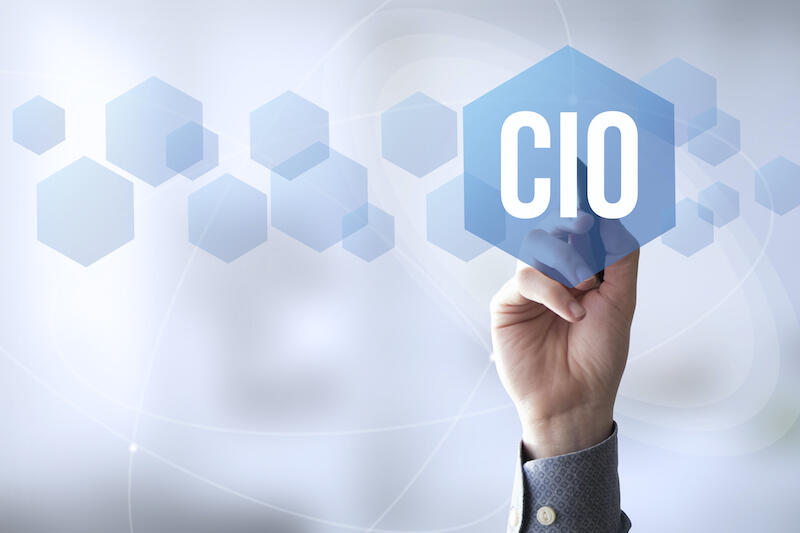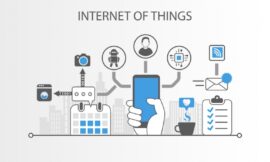Today’s top IT executive is operating in a cloud-first, business-first world and is critical to the viability and success of the business, said CIOs during a roundtable Tuesday.

Image: iStockphoto/milindri
Agility and resilience have become key buzzwords for CIOs, who were seeing their role start to change even prior to the pandemic. COVID-19 brought CIOs to the forefront like never before, as they were tasked with migrating huge numbers of people to working remotely while accelerating digital initiatives so businesses could continue to run and remain competitive.
Panelists Jacqui Guichelaar, Group CIO of Cisco, and Brooklyn Hospital Center CIO Dr. Sam Amirfar agreed that the world of work has forever changed.
New telemedicine clinics were up and running within two weeks, the use of iPads for communications with patients and families and remote telemetry units to monitor patients were up and running within weeks, among other measures, Amirfar recalled.
SEE: COVID-19 workplace policy (TechRepublic Premium)
One year later, a lot of those remote access issues and increased security needs are still there and the hospital has to continue adapting to changes, such as the different working environment, patients visiting doctors from home, a shortage of PPE and, in the midst of this, increased intrusions into the network, he said. “Every step…every month, seems like it’s been a change.”
Guichelaar said Cisco’s IT team had to give 140,000 employees the ability to support customers working from home in 10 days. “We have never come back from that and [normal work] has never come back,” she said. “We were focused on cloud, digital workplace and security before, now the work is fundamentally different. Everything has changed and the speed at which we have to make choices and implement technology to deal with the challenges, I’ve never seen it before in my career.”
She added that “I like being in the action but … it’s tough. At the same time, we’re changing the industry every single day and that’s exciting.”
Change management and the CIO as a psychologist
Moderator Michael Krigsman, an industry analyst and host of CXOtalk, followed up on that, asking Guichelaar and Amirfar about the stresses this has placed on IT.
The question when IT rolls out new technologies and processes is how IT handles change management, Guichelaar said, but noted, “I don’t think we have time for that anymore.” Cisco’s Webex platform is at 99.9% adoption, she said, and “I used to have to entice people to use a new release,” and now, people are asking to use it. “Change management as we know it is out the window.”
“I feel like the modern CIO has to be a psychologist for change management,” Amirfar said, explaining that IT has to warm people up to change, provide reasons and give a timeline and other specifics on how things will be after the change. They also have to get buy-in.
“The quicker you can adapt to change, the more likely you are to survive and thrive,” he said. “It’s a good place to be. Now that we’ve flexed the muscles, we can adapt to any change and adversity.”
Guichelaar agreed and admitted she is still challenged by figuring out how to balance how long to wait to get people on board with implementing a change.
Sometimes speed is dictated by an emergency and you adapt as best as you can, Amirfar said. It’s important to try and get as many people on board as possible, but you also have to learn to adapt and move forward, while making compromises along the way.
“The most important thing to remember is the perfect can’t be the enemy of the pretty good,” and you can’t wait for perfect, he said.
Cisco is releasing features on WebEx every week, and sometimes that doesn’t go so well, due to glitches or performance issues, Guichelaar said. “But we’re releasing at speed … the reality is we’re not going to get everything right and sometimes you have to make a tech change and let the organization catch up with it. You have to think about the world differently.”
Agility and resilience are key attributes for CIOs and organizations today, Amirfar said. “I feel like we jumped a couple of years in the future in a couple of weeks.” When the pandemic ends and the mindset and changes brought on by it will continue forward, “We won’t be living in 2019,” he said.
Both CIOs also agreed that cloud computing has been a game-changer.
Agility is at the heart of what IT thinks about every day, Guichelaar said. “Every CIO around the world is thinking about cloud–hybrid, multi-cloud, public, SaaS platforms, and how do you connect [those] to your on-premises data centers.”
Cloud computing alleviates a lot of stresses on the hospital’s systems, Amirfar said. “We can develop programs, apps, implement change, adapt and improve a lot easier on the cloud. We don’t have to worry about the underlying architecture.”
At the same time, health data has become very valuable during the pandemic and a lot of entities want access to it. The hospital has seen an increase in attempted intrusions into the network, he said.
The changing role
Previously, IT mainly had to worry about things breaking. Now, the CIO has to worry about every aspect of the organization, he said, including finance and patient scheduling–and be conversant and know what the issues are. “This dramatically increases your responsibilities. More hospitals have become more sophisticated and tech-savvy and as we require new technology and programs, the responsibilities increase … the technical complication and sophistication and interfaces go up logarithmically.”
The title is no longer important, Guichelaar observed. Now, it’s about leadership, decision making, courage and the conviction to stay the course, she said.
“I can’t emphasize the leadership piece enough. It’s absolutely critical to look after your people.”
One thing Cisco did internally at the height of the pandemic was to figure out where the stresses are. “What showed up is women, especially mothers and leaders are taking a lot of that pressure and stress, so from a mental health perspective, we have to figure out how we look after them and ourselves.”
Krigsman asked both to provide advice for how CIOs can remain relevant and contribute the highest level of value and innovation to the organization.
“If you make a good decision, it is based on fact,” Amirfar said. “The fundamental basis of making effective decisions is data. CIOs have to bring accurate security and timely data for decision-making to business leaders. So the role has gotten broader.”
The increased responsibilities can be difficult at times, with the right mindset, communication and leadership, CIOs will be effective, he said.
“A good leader listens to the people that they’re leading,” Guichelaar said. Then, when they make decisions and communicate them, staff will know they were heard.
In the final analysis, CIOs must think differently about how they execute than they did in the past, she said. A lot of people want to be involved in how decisions are made, but CIOs want the flexibility to make the choice, she said.
“You have to take your team with you,” Guichelaar said. “That balance between how you make a fast decision and take people with you at the same time … is still a challenge,” she said. “Navigating through that is the key for leadership.”
Also see
Top 5 programming languages for systems admins to learn (free PDF) (TechRepublic)
New Employee Checklist and Default Access Policy (TechRepublic Premium)
ZDNet’s top enterprise CEOs of the 2010s (ZDNet)
CXO: More must-read coverage (TechRepublic on Flipboard)
Source of Article




